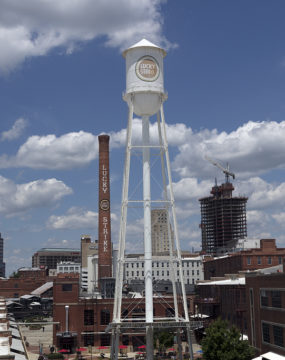Keep up with our latest demographic insights

The 2019 county population estimates from the U.S. Census Bureau are the last set of population estimate before results of the 2020 Census are released in early 2021. Here’s what they tell us about how counties have changed in North Carolina over the past decade. Growth and Decline Statewide, North Carolina has maintained steady growth since the 2010 Census, but this growth has been uneven across the state: 57 counties have grown since 2010 –…

North Carolina’s population grew to an estimated 10.4 million people as of July 1, 2018, according to new estimates from the U.S. Census Bureau. From July 1, 2017 to July 1, 2018, the state’s population increased by nearly 113,000 individuals. This marks the third consecutive year that the state population has grown by more than 100,000 in a single year. Among the states, North Carolina had the 5th largest numeric increase since 2017. Only Texas (379K), Florida (323K), California…

North Carolina’s population grew to an estimated 10.3 million people as of July 1, 2017, according to new estimates from the U.S. Census Bureau. From July 1, 2016 to July 1, 2017, the state’s population increased by nearly 117,000 individuals. This number surpassed last year’s total population increase and marks the largest single year increase in the state’s population since 2010. Among the states, North Carolina had the 5th largest numeric increase since 2016. Only…
Net migration has been a major driver of North Carolina’s growth since 1990 and its importance will only increase in coming years. The only other potential source of growth is natural increase—births minus deaths—and this has been declining since the recession. In my recent post, I noted that even if fertility rates increase significantly, we should not expect natural increase to rebound to prior levels, largely due to the growing impacts of population aging. Although…
North Carolina’s population grew by 112,000 between 2015 and 2016, the largest single year increase since 2010, according to new data from the U.S. Census Bureau. With a growth rate of 1.1%, North Carolina’s 2015-16 growth was faster than the national growth rate (0.7%) and similar to the South’s regional rate (1.1%). Overall, North Carolina’s population has grown by 611,000 since 2010, an increase of 6.4%. The uptick in population growth was fueled by an…
Between 1990 and 1995, North Carolina’s population increased by more than 550,000 new residents, a growth rate of 8.3%. The numeric growth in the next decade was even greater: the state grew by 7.9% to gain an estimated 637,000 new residents between 2000 and 2005. Though North Carolina continues to grow faster than the national average, the 2015 estimates indicate that the size and rate of growth has slowed. Between 2010 and 2015, North Carolina…
North Carolina added an average of 281 people per day between 2014 and 2015, pushing its total population above 10 million in the U.S. Census Bureau’s recently released state population estimates. North Carolina is the ninth state to pass the 10 million mark. Since the 2010 Census, North Carolina’s population has grown by over half a million new residents (507,110), more than any state except for Texas (2.3M), California (1.9M), Florida (1.5M), and Georgia (526K).…
Quite frequently, North Carolina’s trends mirror national averages. Nationwide, 53% of U.S. counties lost population between 2010 and 2014. In North Carolina, 49% did. North Carolina differs slightly from the nation, however, in the county distribution of the underlying demographic processes driving population growth—or decline. In North Carolina counties it was more common for both demographic processes to move in tandem than it was nationwide. One-third of NC counties had population growth from both natural…
Two fundamental processes underpin population growth—or decline. The first, natural increase (or natural decrease) captures the balance of births and deaths in an area and reflects the underlying age structure of the population. Relatively young populations tend to have more births than deaths, or natural increase. Relatively older populations, on the other hand, tend to experience natural decrease, more deaths than births. The second, net migration, reflects the appeal of an area relative to other…
Monday, September 15th, through Wednesday, October 15th, marks National Hispanic Heritage Month. In 1990, 76,726 North Carolina residents identified as Hispanic, 1.2% of the state’s population. Twenty-two years later, the state’s Hispanic population had increased eleven-fold. According to the American Community Survey, there were 845,420 Hispanic individuals living in North Carolina in 2012, representing 8.7% of the state’s population. Both components of population growth—net migration and natural increase, or more births than deaths—drove the rapid…
Your support is critical to our mission of measuring, understanding, and predicting population change and its impact. Donate to Carolina Demography today.